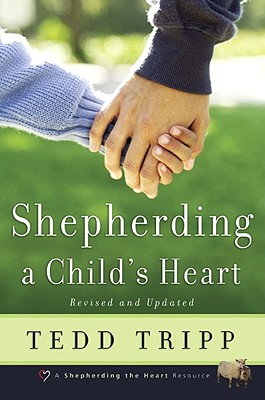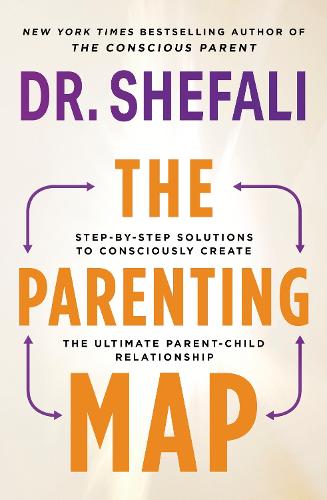It is important to start with the right book in the process of growth and development as parents. Some books are more valuable than others and can be more useful at certain moments in our lives. That’s why choosing the first book is crucial and can have a significant impact on our perspectives on parenting.In my case, I started with the book “Shepherding a Child’s Heart” by Tedd Tripp.
I read it just a few months before becoming a mother and it offered me a clear perspective on how to raise children. This book helped me understand that it is not enough to focus only on my child’s behavior, but I also need to focus on their heart and character. The book helped me understand the importance of building a relationship of trust and teaching children how to make good decisions and have a strong character.
This book is a useful guide for parents and anyone who wants to have better relationships with their children. The book offers numerous practical examples of how we can shepherd our children and cultivate a healthy heart in them. One of these examples is that the author argues that, in order to have a good relationship with our children, we need to see them as individuals who need understanding and love, not just as objects that need to be controlled. He emphasizes that we should not only be concerned with their behavior, but also with the reason why they exhibit those behaviors and help them understand the consequences of their actions. This is not necessarily a critical review of Tedd Tripp’s book, these are just a few ideas that have weighed heavily on me.
1. The first part of the book focuses on the idea that parents need to understand that their child’s heart is what drives their behavior, and that they need to invest time and energy into helping them develop their heart and character. The author speaks about the importance of raising children in a safe and stable environment and their need for love and authentic relationships with their parents. A relevant example from the book is that of a father who wanted his teenage son to become a responsible and healthy young man. However, the boy rebelled and did not follow the rules set by his father, often defying him and doing things that caused him problems. Instead of just focusing on his son’s negative behavior, the father tried to understand him better, communicate with him, and build a closer relationship with him. The father began to spend more time with his son, listen to his problems, and offer his support. Over time, the boy began to have more trust in his father and to open up more about his feelings and thoughts. The father started to teach his son how to make good decisions and how to control his emotions in difficult situations. Instead of punishing him for every mistake, the father began to show his son how to learn from his mistakes and take responsibility for his actions. Over time, the boy became more responsible and made better decisions, and his relationship with his father improved significantly. This story illustrates how parents can influence their children’s heart and behavior through a strong and authentic relationship.
Instead of just focusing on negative behavior and using punishment and threats to change it, parents need to focus on their children’s heart and emotional needs. This approach can help raise children who are more responsible, empathetic, and who have a closer and healthier relationship with their parents.
2. The second part of the book focuses on the importance of disciplining and educating children, but not in an authoritarian or abusive way, but by building a relationship of trust and teaching children how to make good decisions and have a strong character. The author emphasizes the importance of parents being role models for their children and showing them the pursuit of a relationship with God. One of these examples is the use of natural consequences, where the child is allowed to experience the consequences of their own actions and choices, instead of receiving arbitrary punishments. For example, if a child forgets their favorite toy at the playground and loses it, the parent should not buy them a new one. Instead, they should help them understand that if they leave their toy at the playground, there is a risk of losing it and they need to take care of their belongings. This approach helps children learn responsibility and the consequences of their own actions, rather than relying on the fear of punishment.
Another example is building authentic relationships with children by involving them in family decisions and decision-making related to family activities. Instead of imposing our own desires and preferences on our children, we should offer them options and listen to them when they express their opinions. This helps children feel respected and involved and teaches them to make good decisions and be responsible.
3. In the last part of the book, the author talks about the importance of having a clear vision of life and our purpose as parents, and how we can help children discover their own vision and develop their unique talents and gifts. The author encourages parents to have a clear vision of their life and purpose as parents. He argues that teaching children to follow a set of rules or to behave correctly is not enough to help them develop character and find a purpose in life. Instead, parents need to offer their children a broader vision and help them discover their unique gifts and talents. He believes that every child is created with a special purpose and plan in life, and it is the parents’ duty to help them discover and cultivate these talents and gifts. For example, a child may have a passion for art or music, and parents need to encourage this passion and offer opportunities for them to develop their skills in this area.
The book “Shepherding a Child’s Heart” provides a biblical and practical approach to raising and educating children, emphasizing the importance of building a strong and authentic relationship with them. The book can be useful for parents who want to help their children develop their hearts and character, as well as for anyone who works with children and wants to offer them a healthy perspective on their development.
For other recommended books and I hope to come back soon with some thoughts, I recommend you to check out the article The Best Books for Your Child’s Health and Personal Development.




